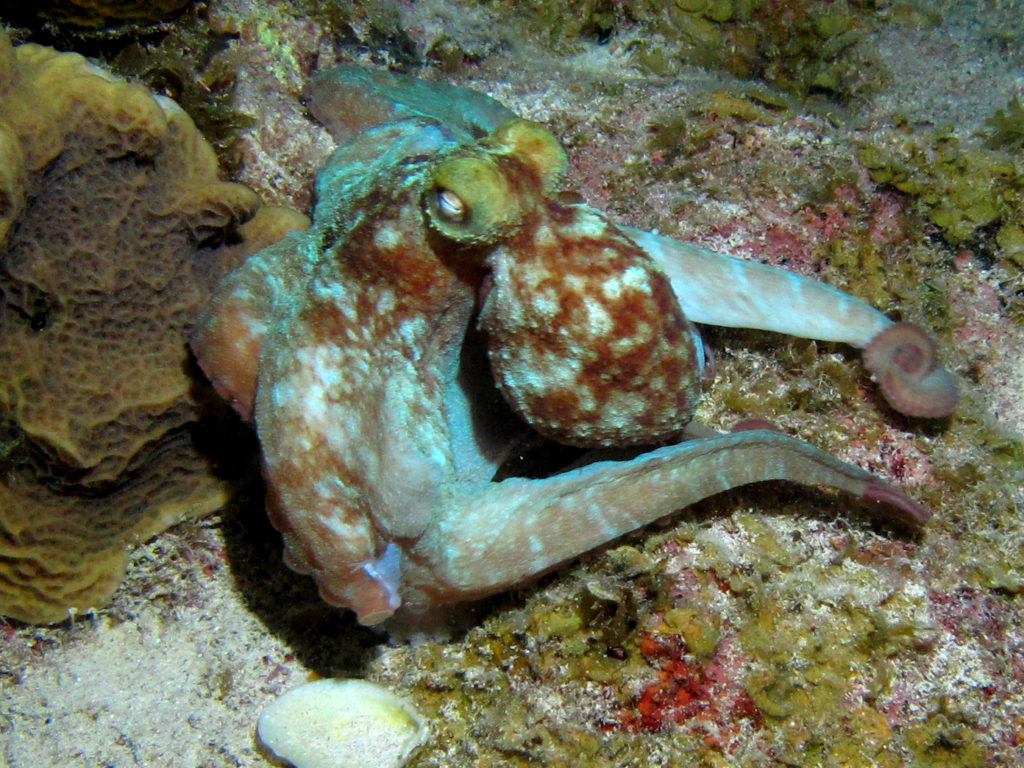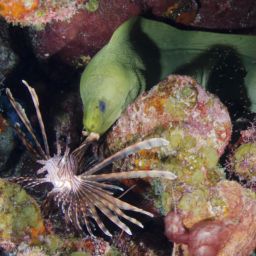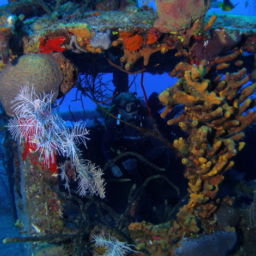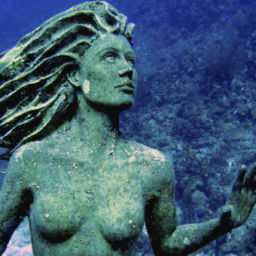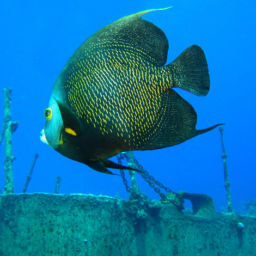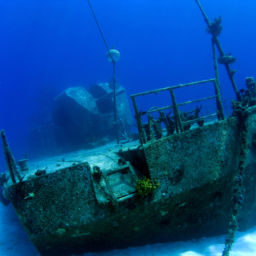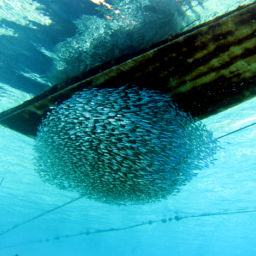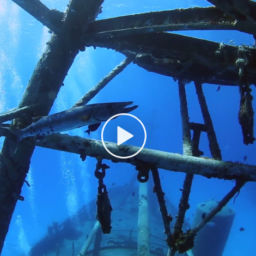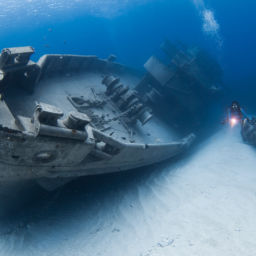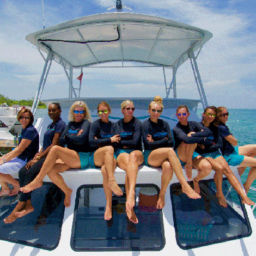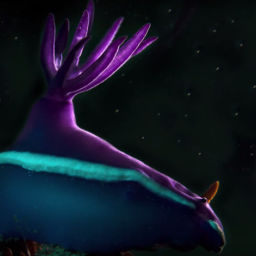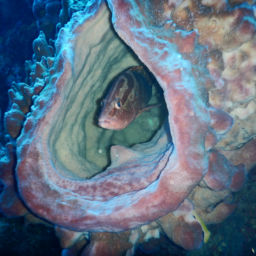For the last few years I’ve lived in Grand Cayman, a 24-mile-wide island just south of Cuba and north of Jamaica. There’s a maximum elevation of around 60 feet (18 m), which means there’s no river run-off to cloud the waters. On a “bad” day in Cayman, visibility may be down to around 50 feet (15 m); on a good day you’ll see for hundreds of feet into the blue. Since I spend most of those perfect-viz days in an office, I enjoy Cayman’s underwater scenery mostly on night dives. Tonight we’re visiting my favorite night site: Turtle Reef. In the northwest corner of the island, Turtle Reef is a 20-minute drive from the capital city of George Town.
The resident dive shop at Turtle Reef is Sun Divers at Macabuca. If you pop in before 5 pm — best to go earlier, because everything runs on island time — to sign a waiver and pay for the tanks, the shop will happily leave them out for you. You can rent gear and lights as well. Collect any equipment in the afternoon and drop it back the next day when the shop is open. With water temperatures in Cayman ranging from 82 to 84 degrees F (27 to 29 C), I’ve never needed a wetsuit. Those with less insulation or cold tolerance will want at least a 3 mm shorty.
Diving Turtle Reef
Turtle Reef’s entrance is in a little cove in the ironshore, near the Macabuca Bar and Cracked Conch restaurant, both worth a post-dive visit. The light from Macabuca casts a beacon into the water and you’ll often see fish using it to hunt in the shallows. The cove provides a good opportunity to get comfortable and test your torches before swimming out into the darkness.
The site itself is a mini-wall, marked by a buoy about 330 feet (100 m) out. Descend immediately however, and watch for rays and peacock flounder in the sand or squid in the shallows on the swim out. Once you arrive at the site, the mini-wall descends sharply to around 60 feet (18 m). Turn northeast (right) or south (left), depending on the direction of current. With the prevailing current you will turn right. Keep your eyes on the wall as you descend, watching for octopus that blend into the background with fluid color changes.
Turning left you will find several wide swim-through canyons, with tarpon lazily hanging around. Their silver scales flash in your torchlight, which they’ll sometimes take advantage of to hunt. I like to turn right, past an old tube sponge that often hides lobster, shrimp, eels or (sadly) the occasional cluster of lionfish. Overhangs on the mini-wall are ideal places for lobsters, eels and octopus. You’ve also got a good chance of seeing a turtle here. Coral and rocky outcrops provide more opportunities to see lobsters, sleeping grouper, or Pederson or coral shrimp. I love finding arrow crabs, strange spider-like creatures that remind me of the (British) children’s television character Wizbit.
Staying at the base of the wall keeps you between 60 to 70 feet (18 to 21 m). You can log some decent bottom time on the way out before rising to the top of the wall for your return trip. On the way back, keep your eyes open again for rays, flounders, and other bottom dwellers in the sand. The light of the Macabuca Bar guides you in, with the promise of a rewarding Caribbean beer.
Guest author Jez Snead lives in Grand Cayman and tries to dive as much as possible. He blogs sporadically on diving and other topics he finds interesting and is always happy when people stop by.


